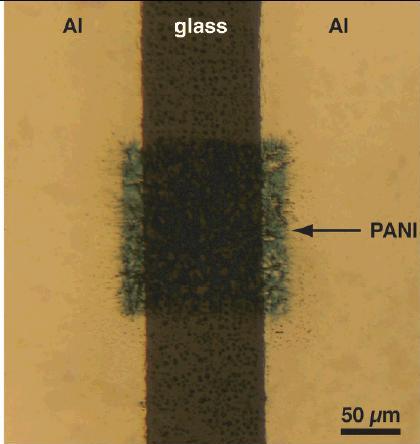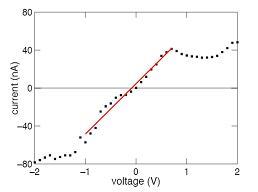We implement Laser Induced Forward Transfer (LIFT) of polyaniline films for microbiosensor applications. Polyaniline films are printed in the solid phase by Laser Induced Forward Transfer directly in between aluminum electrodes lying on a glass substrate. To apply solid-phase laser printing, aniline is in situ polymerized on quartz substrates. The electrical characteristics of printed polyaniline present ohmic behavior, allowing for the use of these substrates in electrochemical biosensing applications.
Optical microscope image of a rectangular polyaniline (PANI) spot deposited by Laser Induced Forward Transfer on a glass substrate between two aluminum electrodes. The dimensions of the polyaniline layer are 130 μm x 130 μm. The glass channel between the aluminum electrodes is 100 μm wide and the aluminum electrodes are 700 μm wide. From the color of the polyaniline layer it is clear that the polymer is in the emeraldine, conducting form.
Current-voltage characteristics of polyaniline deposited by Laser Induced Forward Transfer between aluminum electrodes. The deposited polyaniline presents ohmic behavior, which is essential for its use in electrochemical biosensor devices. The conductivity of the film is found to be 28 S/cm, which is in good agreement with polyaniline conductivity values found in literature. Therefore, laser deposition does not alter the electrical properties of polyaniline films and offers a reliable method for the fabrication of microsensors based on this material.

